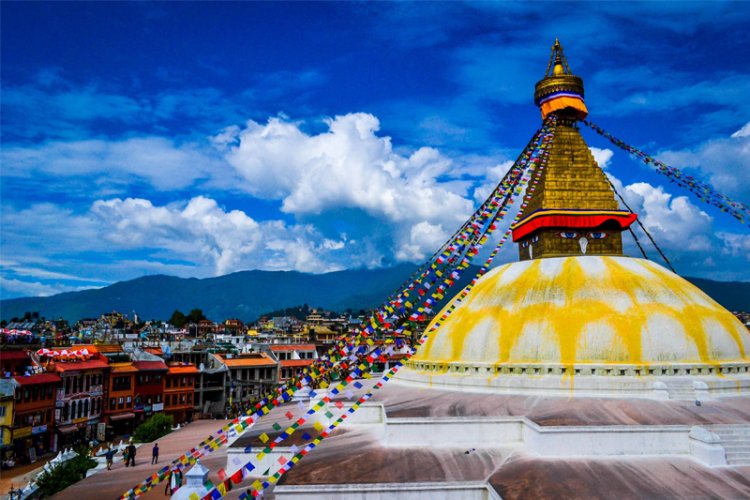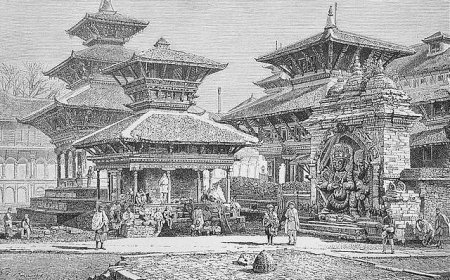Exploring the Cultural Heritage of Nepal: A Journey Through Kathmandu's Temples and Monasteries
Discover the rich cultural heritage of Nepal through a journey through Kathmandu's temples and monasteries. Learn about the history and significance of these sacred sites and gain insight into the unique blend of Buddhism and Hinduism that defines Nepal's cultural identity.

Nepal is a small country located in South Asia, nestled between India and China, and is known for its beautiful landscapes, rich culture, and vibrant history. One of the most notable aspects of Nepal's culture is its religious heritage, which is reflected in the many temples and monasteries that can be found throughout the country, particularly in the capital city of Kathmandu. In this article, we will take a journey through Kathmandu's temples and monasteries, exploring their history, significance, and cultural impact on the city and country.
Kathmandu is home to many ancient temples and monasteries, each with its own unique history and significance. One of the most famous temples in Kathmandu is the Pashupatinath Temple, which is dedicated to Lord Shiva and is one of the most sacred Hindu temples in the world. The temple is located on the banks of the Bagmati River and is considered to be one of the most important pilgrimage sites for Hindus. The temple complex is surrounded by many smaller temples and shrines, and the temple's main entrance is adorned with intricate carvings and sculptures.
Another important temple in Kathmandu is the Swayambhunath Stupa, also known as the Monkey Temple. This temple is considered to be one of the most important Buddhist pilgrimage sites in Nepal. The temple is located on a hilltop and is known for its beautiful stupa, which is adorned with intricate carvings and statues of Buddha. The temple complex also includes many smaller temples and shrines, and the temple's main entrance is adorned with intricate carvings and sculptures. The temple is also known for the monkeys that inhabit the area, which are considered sacred by the local people.
The Boudhanath Stupa is another important Buddhist temple in Kathmandu. It is one of the largest stupas in the world and is considered to be one of the most sacred Buddhist pilgrimage sites in Nepal. The stupa is adorned with intricate carvings and statues of Buddha, and the temple complex includes many smaller temples and shrines. The temple is also known for the many Tibetan refugees who have settled in the area, and it is a popular spot for tourists who are interested in learning more about Tibetan culture and Buddhism.
The Kathmandu Durbar Square is another important cultural heritage site in the city. The square is home to many ancient temples and palaces, including the Hanuman Dhoka Palace, which was the residence of the Nepalese royal family until the 19th century. The palace is a beautiful example of Nepalese architecture, and it is adorned with intricate carvings and sculptures. The square also includes many smaller temples and shrines, and it is a popular spot for tourists who are interested in learning more about Nepalese culture and history.
In addition to the temples and monasteries, Kathmandu is also home to many other cultural heritage sites. For example, the Patan Durbar Square, which is located just outside of Kathmandu, is home to many ancient temples and palaces, including the Royal Palace, which was the residence of the Patan royal family until the 19th century. The palace is a beautiful example of Nepalese architecture, and it is adorned with intricate carvings and sculptures. The square also includes many smaller temples and shrines, and it is a popular spot for tourists who are interested in learning more about Nepalese culture and history.
In conclusion, Nepal's religious heritage is reflected in the many temples and monasteries that can be found throughout the country, particularly in the capital city of Kathmandu. These temples and monasteries are not only important pilgrimage sites for Hindus and Buddhists, but they also serve as cultural heritage sites that give insight into the country's rich history and culture. The Pashupatinath Temple, Swayambhunath Stupa, Boudhanath Stupa, and Kathmandu Durbar Square are just a few examples of the many temples and monasteries that can be found in Kathmandu, each with their own unique history and significance. These cultural heritage sites are not only a must-see for tourists, but they also play an important role in preserving Nepal's cultural heritage and passing it on to future generations. Exploring these temples and monasteries is a great way to gain a deeper understanding of Nepal's culture and history, and to appreciate the beauty and significance of these ancient religious sites.
What's Your Reaction?




































































































